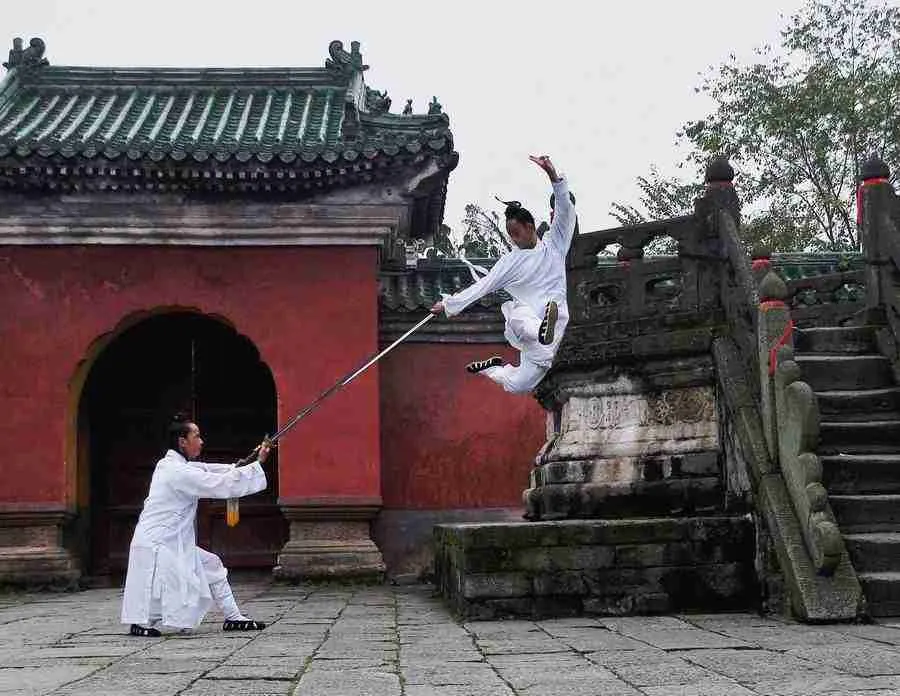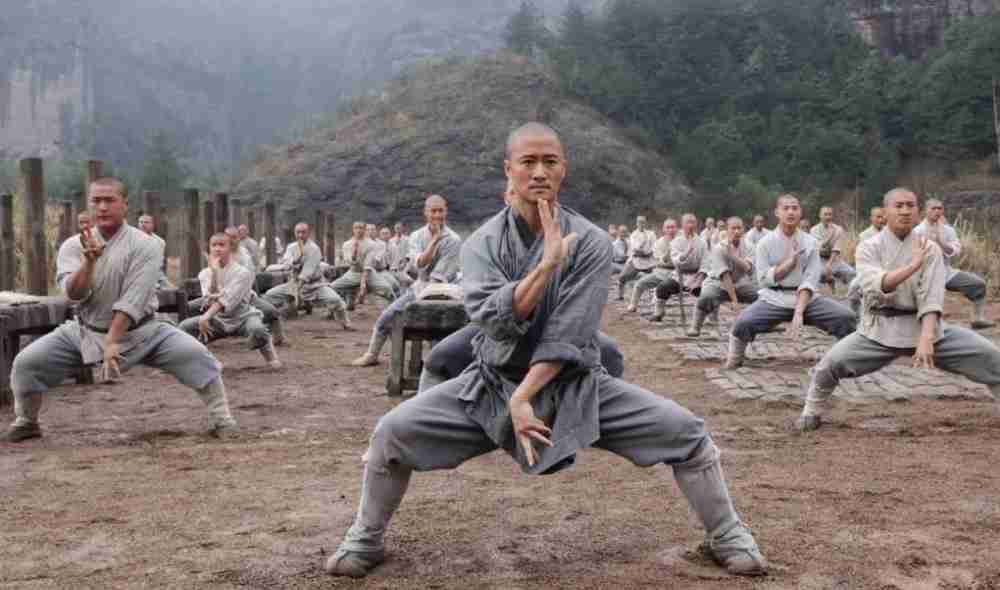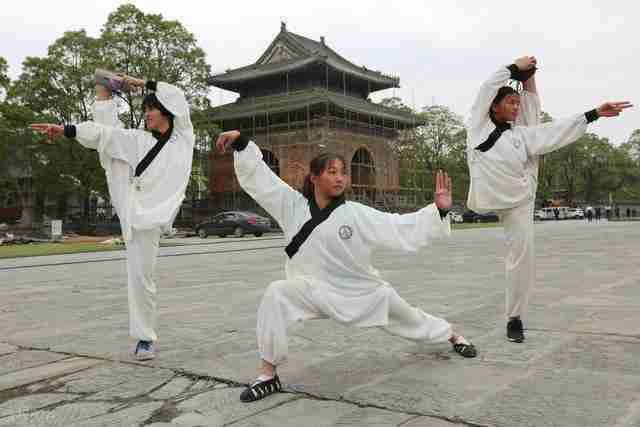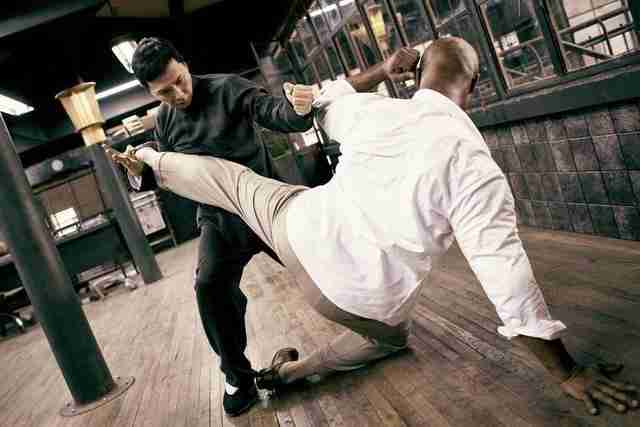Kung Fu is one of the biggest representations of Chinese culture, and for the most part, China and Chinese cultures are identified by Kung Fu. But what exactly is Kung Fu, and where did Kung Fu come from?
What Does Kung Fu Mean In Chinese?
Chinese Kung Fu is also called Wushu or Gongfu, or even Chinese martial arts in general. It is recognized as one of the important aspects of Chinese culture, and it’s also one of the longest-lasting and the earliest sports in Chinese culture. This martial art is considered to be both a form of exercise and also a spiritual dimension from self-discipline and concentration. It’s also considered to be an unarmed form of personal combat that is a lot like tae kwon do or karate. Kung Fu also signified the careful preparation needed for the performance of just about any skillful endeavor with no interference from emotions or intellect.
This sport utilizes the players’ brainpower and brawn. It’s also worth noting that Kung Fu involves the use of techniques that are different from what is applied in other sports, such as the ones intended for boxing and self-defense purposes. Essentially, Kung Fu is more of a holistic sport whose primary role is the development of a feel of internal discipline through the use of external techniques.
What Is The History Of Kung Fu?

It is theorized that Kung Fu is based in part upon some of the classical Chinese philosophies. It has a very long history, though, and it’s all based on techniques that feature the use of the unique combination of practical self-defense, exercise, art, and self-discipline.
That said, it is believed that Chinese Kung Fu dates back to the primeval society, and a time when the human race/ ancient Chinese is believed to have used things called cudgels when fighting the wild beasts. The Ancient Chinese accumulated self-defense experience gradually over the years, and by the time the Shang Dynasty reigned – between 1600 and 1046BC, hunting was regarded as one of the most important measures for Kung Fu training.
Besides the Shang Dynasty, Kung Fu was also important, and it evolved significantly during the reign of the Zhou Dynasty from the 17TH Century BC-221BC. At the time, martial arts evolved into some form of dance, and the dance moves would be used to train the soldiers and also to inspire and improve their morale.
During Zhou Dynasty’s reign, for example, martial arts dances were designated as crucial components of the education offered at the time. There was also the application of wrestling techniques in the battlefields, and these gained a great deal of attention from many states, especially during the Spring & Autumn Periods. At this time, the emperor held two wrestling contests yearly, in Spring and Autumn. These competitions allowed for the selection of soldiers who were excellent in the martial arts, even as sword forging technologies and skills evolved and the sword ceremony developed rapidly.
In the Han (202 BC – 220 AD) and Qin (221 BC – 207 BC) Dynasties, swordplay, wrestling, and also martial arts were quite popular. One of the most notable performances of these days was Xiang Zhuang’s Sword Dancing which took place at the Hongmen Banquet, and it was the closest performance to martial arts as is known today. There was spear play during Han Dynasty’s reign, and it led to more advanced techniques involving the use of the spear. This was followed by the 5-animal-style exercise by Hua Tuo that was part of the Chinese martial arts.
Exams on Kung Fu were then proposed and then implemented during Tang Dynasty’s reign between 618 and 907. Excellent candidates received awards and titles, and this further propelled the development and refinement of the martial arts, even as it developed into more of an art form and also an independent genre that would then be introduced in other countries across Southeast Asia.
During Song (960 – 1279) and Yuan (1206 – 1368) dynasties’ reigns, Kung Fu was more common with the civil organizations, even as the popularity of the art neared its peak. The Yinglue Organization, for example, centered on the use of the cudgel and spearplay, while organizations majoring in arching formed the Arching Origination. There was a different genre by the Luqi People. The organization notwithstanding, martial arts was performed either in pairs or by an individual.
Chinese Kung Fu developed even further during Ming and Qing dynasties, and these are also the times when many Kung Fu genres came to be, as many books were published on martial arts. Wrestling techniques were also integrated into the martial arts, resulting in the improvement and maturity of the martial arts.
What Is The Origin Of Kung Fu?
Kung Fu is believed to have originated from the Zhou Dynasty of 1111-255BC or even earlier. Recordings of ancient Chinese culture show that the Daoists practiced Kung Fu in the 5th century. These predictions are based on different actions and stances based on the keen observations of the human muscular and skeletal anatomy, as well as physiology – the analysis is based on Kung Fu’s heavy reliance on great muscular coordination.
Essentially, the many movements employed in Kung Fu are imitations of the fighting styles of different animals, all of which are initiated from one of the 5 basic foot positions. These positions include the normal upright posture and also the 4 stances – frog, dragon, snake, and horse riding.
These stances and the evolution of martial arts have led to hundreds of Kung Fu styles, including the armed and the unarmed techniques developed over the years.
What Are The Different Types Of Kung Fu?
Northern Kung Fu
The Northern-Style Kung Fu is a Kung Fu style that focuses and emphasizes the use of long-range techniques that also include rather quick advances, as well as retreats. Northern Kung Fu also incorporates the use of wide stances, leaping and kicking techniques, quickness, circular whirling blocks, very agile, as well as aggressive attacks. Some of the postures incorporated into the Northern styles include the bow, horse, drop, and dragon stances, all connected using very quick and fluid transitions to ensure quick changes in the direction where the force is applied.
- Shaolin Kung Fu

Shaolin Kung Fu is regarded as one of the oldest and also the most widely used form of Chinese Martial arts. It’s a famous martial art that combines the martial arts and art of Zen. It is believed to have originated from the Shaolin Temple based in China’s Henan province and dates back to over 1500 years ago.
Shaolin type of Kung Fu is characterized with focus on active combat and real-life, and it’s structured in routines featuring short, tight, precise, fast-paced, compact, flexible, as well as offensive and defensive movements that are all in uniformity in terms of the consciousness and the movement of the person practicing Kung Fu.
- Long Fist Kung Fu

Also known as ChangQuan, the Long Fist Kung Fu style is a type of Kung Fu that emphasizes fully the extended kicks, as well as striking techniques. It is often regarded as a long-range fighting system. The motto for this Kung Fu technique is ‘the best defense is the strong offense,’ and it features the use of good balance in the foot and hand techniques, albeit in a renowned and impressive acrobatics kick.
- Eagle Claw Kung Fu
This is a Kung Fu martial arts style that is known for the gripping techniques, as well as the joint lock systems, pressure point strikes, and takedowns, all of which are representations of the Chinese grappling that is referred to as Chin Na.
- Monkey Style Kung Fu
Also known as Hou Quan, the Monkey Kung Fu style is one of the Chinese martial arts that makes use of the monkey or ape-like movements as a part of its primary technique.
Southern Kung Fu
Southern-Style Chinese Kung Fu or Nanquan is a Chinese martial arts style featuring low, stable stances, as well as short, powerful moves that combine the attack and defense movements. It generally focuses more on the use of the arms and also full-body techniques rather than the acrobatic and high kick motions.
- Wing Chun Kung Fu

Wing Chun refers to the traditional Chinese martial art, a technique that was developed to help stop invasive attacks. It represents a streamlined, active, and also legitimate defense system and also a boxing technique that involves the use of an incredible amount of force. But in comparison with the rest of the traditional Chinese martial arts, Wing Chun is a lot more focused on subduing the opponents fast, minimizing the damage that may be caused to fighters. It is, therefore, considered close-range combat.
- Hung Ga Kung Fu
This is a type of the southern Shaolin Kung Fu style. It’s hallmarked by the strong horse stances, as well as strong hand techniques like the bridge hand also the tiger claw known for its versatility. It takes a bit of time to learn this style of Kung Fu.
- Choy Li Fut Kung Fu
This Kung Fu style honors the Buddhist monk called Chok Fook. It is a blend of the Northern and Southern styles and features the use of powerful hand and arm techniques borrowed from the South, but also combined with circular, extended movements, twisting of the whole body, as well as agile movements.
Who Invented Kung Fu?
Bodhidharma is credited as the traditional transmitter of Chan Buddhism to China and is as such considered the Chinese first Patriarch. And according to Chinese legend, he is also the one who introduced Kung Fu as he engaged the monks in physical training in the Shaolin Monastery, later leading to the creation of the popular Shaolin Kung Fu.
Why Was Kung Fu Invented?
Chinese Kung Fu was started during ancient China’s slavery society and as Xia Dynasty’s foundation. It was developed as a standard and a more practical way of preparing warriors for battle.
Why Is Kung Fu Important To China?
The reason why Kung Fu is idolized in China is that the sport is an important part of Chinese culture, and also because it teaches patience, respect, morality, and humility.
It is also a philosophical technique that is quite broad, and the different techniques point to the cultural diversity of the Chinese.
It’s also been used to teach self-defense techniques, military training, as well as hunting techniques needed by the soldiers in ancient China.